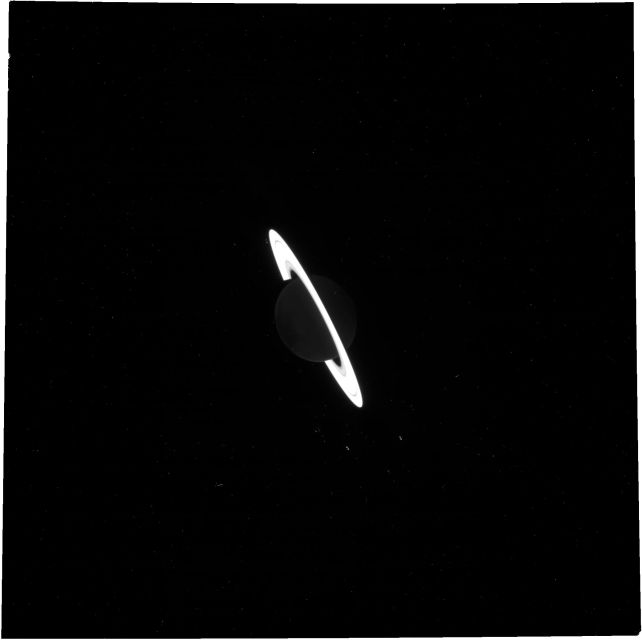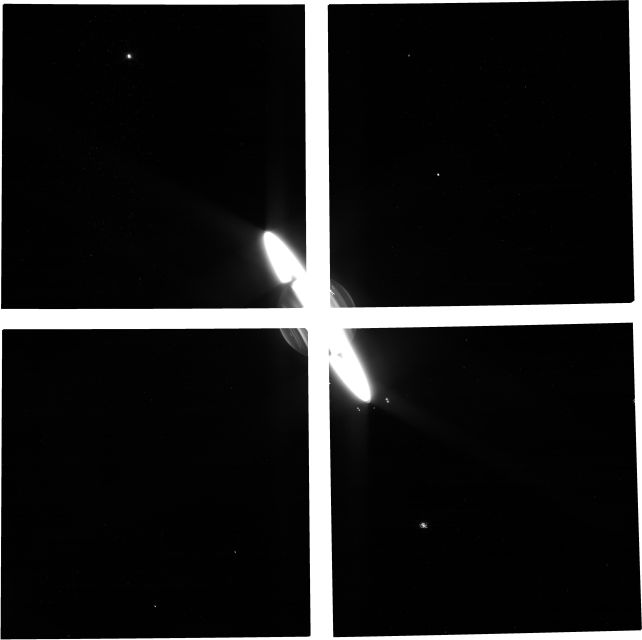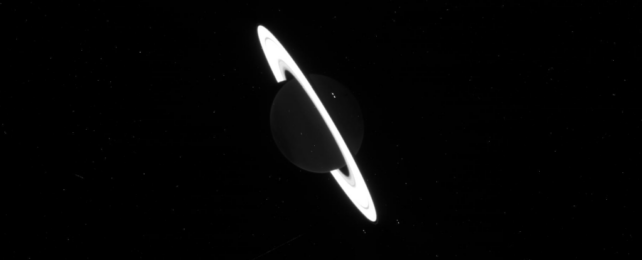We've just been given a teaser of the moment everyone has been waiting for: a James Webb Space Telescope image of Saturn, in all its resplendent glory.
Although the final, processed images have not yet arrived, the telescope has made its observations using its Near Infrared Spectrograph (NIRSpec) instrument, and the raw images have been uploaded to the unofficial JWST Feed website.
That means we have a little teaser about what is to come when the noise is cleaned up, and the images colorized. We suspect it's going to be nothing short of breathtaking.
There are a lot of images on the feed, many of them showing just a glowing white blob with ears, like shining a halogen flashlight on reflective fabric, but a handful stand out in particular.
First off, we have this image in which Saturn itself is almost black.

This is likely due to the filters used. Although Saturn and its rings both glow in infrared and near-infrared wavelengths, the wavelength range is different.
As NASA explained in 2010, "Saturn's rings reflect sunlight at 2 microns, but not at 3 and 5 microns … Saturn's high altitude haze reflects sunlight at both 2 and 3 microns."
The two filters for these images are both in longer wavelength bands, leaving the rings to gleam in almost isolation against the blackness of space.
The white speckles you see in the images are noise, and will no doubt be cleaned up for the final pics.

Next there are images taken with a short wavelength filter, in which the cloud bands of Saturn are visible, the rings glowing brightly about the center, like a fluorescent ring light.
The observations were commissioned by a team led by planetary scientist Leigh Fletcher of the University of Leicester in the UK. They hope to use the NIRSpec data to learn more about Saturn's moons and rings.
NIRSpec, they say, should be sensitive to discovering new moons around the planet – a timely mission given Saturn temporarily lost its title of the planet with the most satellites to Jupiter for a few months earlier this year.
The camera could also establish a new touchpoint for continuing time-domain observations, following the demise of space probe Cassini in 2017.
In their proposal, they also requested images of specific moons of Saturn, as well as observations with JWST's Mid-Infrared Instrument (MIRI). Those are yet to come in.
Since the images are so new, science is no doubt under way. We can't wait to see what they look like when they're all polished and shiny – and what exciting new things Fletcher and his team can discover from them.
You can view what's come in so far on the JWST Feed website.
